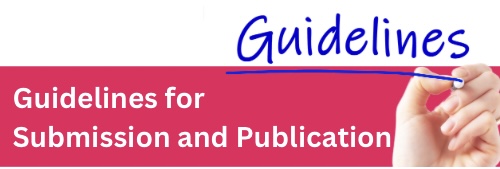การพัฒนารูปแบบการวางแผนจำหน่ายทารกเกิดก่อนกำหนด โรงพยาบาลตำรวจ
Keywords:
การพัฒนารูปแบบ, การวางแผนจำหน่าย, ทารกเกิดก่อนกำหนด, Nursing model development, discharge planning, premature infantsAbstract
การวิจัยนี้เป็นการวิจัยและพัฒนา มีวัตถุประสงค์เพื่อพัฒนารูปแบบการวางแผนจำหน่ายทารกเกิดก่อนกำหนด โรงพยาบาลตำรวจ และศึกษาประสิทธิผลของรูปแบบการวางแผนจำหน่ายทารกเกิดก่อนกำหนด ตัวอย่างเลือกแบบเจาะจงคือ พยาบาลวิชาชีพที่ดูแลทารกเกิดก่อนกำหนดในหอผู้ป่วยทารกแรกเกิดมีปัญหาและไอซียูกุมาร จำนวน 10 คน มารดาที่คลอดทารกก่อนกำหนด 10 คน ทารกเกิดก่อนกำหนด 13 คน เครื่องมือในการวิจัยคือ 1) ประเด็นสนทนากลุ่ม 2) รูปแบบการวางแผนจำหน่ายทารกเกิดก่อนกำหนด 3) แบบทดสอบความรู้การวางแผนจำหน่ายทารกเกิดก่อนกำหนดโดยผู้ทรงคุณวุฒิ 7 คนตรวจสอบความตรงตามเนื้อหาและหาค่าดัชนีความสอดคล้องได้ค่า IOC = 0.79 4) แผนการสอนพยาบาลเรื่องการวางแผนจำหน่ายทารกเกิดก่อนกำหนด 5) แบบสอบถามพยาบาลเกี่ยวกับประสิทธิผลการใช้รูปแบบการวางแผนจำหน่ายทารกเกิดก่อนกำหนดผู้ทรงคุณวุฒิตรวจสอบความตรงตามเนื้อหาได้ค่า CVI = 0.73 และวิเคราะห์หาค่าความเชื่อมั่นได้ค่าครอนบาคแอลฟ่า = 0.76 6) แบบสอบถามมารดาเกี่ยวกับประสิทธิผลการใช้รูปแบบการวางแผนจำหน่ายทารกเกิดก่อนกำหนด ผู้ทรงคุณวุฒิตรวจสอบความตรงตามเนื้อหาได้ค่า CVI = 0.77 และวิเคราะห์หาค่าความเชื่อมั่นได้ค่าครอนบาคแอลฟ่าเท่ากับ 0.73 7) แบบบันทึกผลการใช้รูปแบบการวางแผนจำหน่ายทารกเกิดก่อนกำหนด วิเคราะห์ข้อมูลโดยใช้ค่าเฉลี่ยและส่วนเบี่ยงเบนมาตรฐาน Wilcoxon match pair sign rank test ข้อมูลเชิงคุณภาพวิเคราะห์ข้อมูลเชิงเนื้อหา
ผลการวิจัยสรุปได้ดังนี้ 1) ผลการเปรียบเทียบความรู้พยาบาลก่อนและหลังอบรมเรื่องการวางแผนจำหน่ายทารกเกิดก่อนกำหนด แตกต่างกันอย่างมีนัยสำคัญทางสถิติที่ .05 ในหอผู้ป่วยที่ 1 2) ความคิดเห็นของพยาบาลเกี่ยวกับประสิทธิผลของรูปแบบก่อนและหลังทดลองมีความแตกต่างกันอย่างมีนัยสำคัญทางสถิติที่.05 3) ความคิดเห็นของมารดาเกี่ยวกับประสิทธิผลของรูปแบบอยู่ในระดับมาก สิ่งที่มารดาได้รับการสอนและฝึกทักษะมากที่สุดคือการให้นมมารดาและการดูแลบุตรทั่วไป 4) ข้อมูลเชิงคุณภาพขณะอยู่โรงพยาบาล มารดาสามารถให้นมมารดา นวดสัมผัสทารกและทำแกงการูแคร์ได้ทุกคน เมื่อจำหน่ายกลับบ้านมารดาให้นมมารดาต่อเนื่องทุกคน นวดสัมผัสทารกต่อ 3 คน ไม่มีมารดาทำแกงการูแคร์ต่อ ด้านทารกไม่มีทารกกลับมานอนรักษาซ้ำในโรงพยาบาลภายใน 28 วัน ทารกมาตรวจตามนัดทุกราย จำนวนวันนอนเฉลี่ย 15.2 วัน ไม่มีทารกเป็น ROP ตรวจการได้ยินไม่ผ่าน 2 คน
NURSING MODEL DEVELOPMENT OF DISCHARGE PLANNING FOR PREMATURE INFANTS IN POLICE GENERAL HOSPITAL
Abstract
This is a research and development study. The objectives were to develop a nursing model of discharge planning for premature infants and to study the effectiveness of the model for premature infants at Police General Hospital. The sample included three groups: 10 nurses who cared for premature infants in the high risk neonatal ward and in the pediatric ICU, 10 mothers who gave birth to premature infants, and 13 premature infants. These subjects were purposively selected. Research tools comprised: 1) focus group questionaire, 2) a model of discharge planning for premature infants, 3) a knowledge test for nurses of discharge planning for premature infants This test was verified by 7 experts, and IOC was 0.79, 4) lesson plans focused on discharge planning for premature infants, 5) questionnaires which asked nurses their opinion of the effectiveness of using the model of discharge planning for premature infants. These questionnaires were verified by experts, CVI was .0.73, and Cronbach’s alpha was .0.76, 6) questionnaires which asked mother their opinion of the effectiveness of using the model of discharge planning for premature infants These questionnaires were verified by experts, CVI was .0.77, and Cronbach’s alpha was .0.73, 7) a track record of the results of the discharge planning model for premature infants. Data were analyzed by means and standard deviation and Wilcoxon match pair sign rank test.
The results were as follows: 1) There was significant difference of knowledge before and after nurses were trained for planning to discharge premature infants in ward 1 (p < 0.05). 2) There was significant difference of nurses’ opinions before and after using a nursing model of discharge planning for premature infants (p < 0.05). 3) Mothers rated use of the model at a high level. They were trained and practiced most on breast feeding skills and caring for their children. 4) Qualitative data revealed as follows. During their stay in the hospital, all mothers could do breast feeding, infant massage, and kangaroo care. After discharge and staying at their home, all mothers continued to do breast feeding, three of them massaged their infants, and none continued to do kangaroo care. No infant was readmitted in the hospital within 28 days. All infants came to be followed up. The average length of stay was 15.2 days, and none of the infants had ROP. Two infants did not pass a hearing examination.
Downloads
Downloads
Published
How to Cite
Issue
Section
License
ผลงานที่ได้ตีพิมพ์แล้วจะเป็นลิขสิทธิ์ของวารสารพยาบาลตำรวจ















